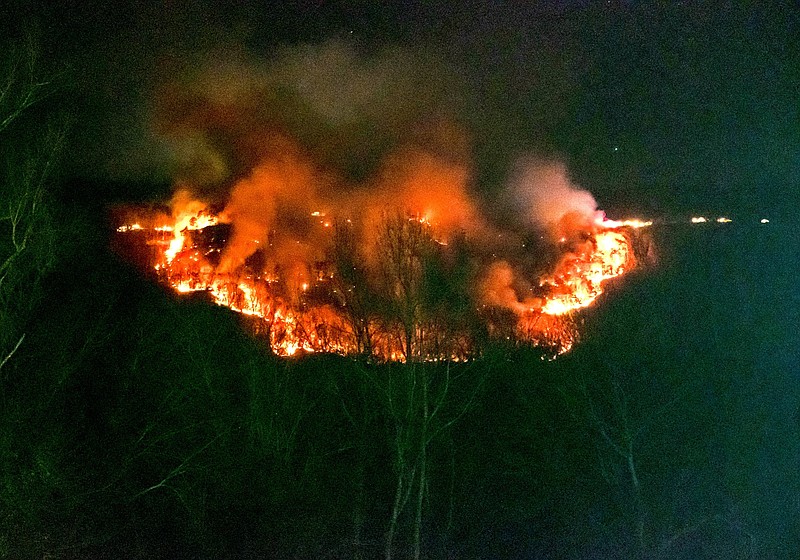State forestry officials are ready for what's expected to be another busy year fighting wildfires after training in Nashville.
The Tennessee Division of Forestry, part of the state Department of Agriculture, updated wildfire firefighter training for the state's response team in activities held recently, according to the nonprofit Southern Group of State Foresters and officials with the state agency. The group consists of 15 member agencies from the Southeast U.S., Puerto Rico and the Virgin Islands.
"Over the last month, more than 600 wildland fire personnel from Tennessee and across the region convened at two comprehensive, interagency wildfire training events," group spokesperson Chelsea Ealum said in a news release.
The teams training helped boost the region's collective readiness to respond to wildfire threats as they emerge, Ealum said. Training for other states' teams also took place in Florida.
Robin Bible, state forestry fire management specialist, said the annual training gets members of the state team ready for another fire season, especially with dry conditions expected this year after the warmest year on record in 2023.
"Our southern area teams get together once a year to get some updates and get organized and perform some administrative-type work," Bible said by phone. "The teams form up in the fall."
Administrative training aims to teach participants how an incident management team works and fits together with other agencies, he said. Members of the state's Grand Divisions Team usually consist of state forestry folks and officials from the National Park Service and U.S. Forest Service, so it's important to maintain good communication.
Tennessee's teams — and most others — are "all-hazard" teams, taking on other crisis situations like hurricanes and flooding along with wildfires, Bible said.
"The Southern Area Blue Incident Management Team is already putting their training to use, as we speak, managing wildfires in the Texas Panhandle," Jim Prevette, the group's fire director, said in the release. "These interagency training initiatives have been, and continue to be, crucial to an effective response to escalating wildfire conditions in the South from record-setting temperatures and drought, alongside the buildup of ready-to-burn natural debris in our communities and natural areas."
The South, still reeling from an unprecedented surge in wildfires in 2023, is already experiencing heightened activity because of climate change, according to the group. According to the National Oceanic and Atmospheric Administration's Global Climate Report, 2023 was the warmest year on record in North America, with a forecast that 2024 will likely be among the top five warmest years on record.
(READ MORE: Forecast for 60-70 mph mountain winds overnight into Tuesday could worsen wildfires)
In the summer of 2023, the Chattanooga region started a descent into extreme drought leading to fall wildfires that plagued communities until late November when rains finally quenched them. Despite those rains, dry conditions have persisted into 2024, officials said.
National Weather Service records show the Chattanooga region got almost 6.5 inches of rain in January followed by 5.03 inches of rain in February, about one-third of an inch short of normal for the month.
Daily rainfall totals in March were normal through Tuesday, but no rain is predicted for the next several days, forecasts show.
The U.S. Drought Monitor shows all of Southeast Tennessee east of the Sequatchie Valley is experiencing abnormally dry conditions. Portions of Middle and West Tennessee are experiencing moderate to severe drought.
Currently, no active burn bans are in place, according to state officials.
Contact Ben Benton at bbenton@timesfreepress.com or 423-757-6569.
